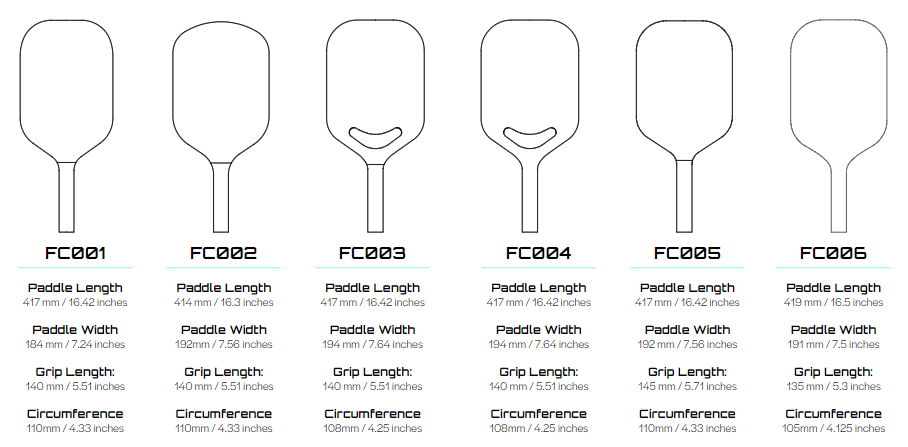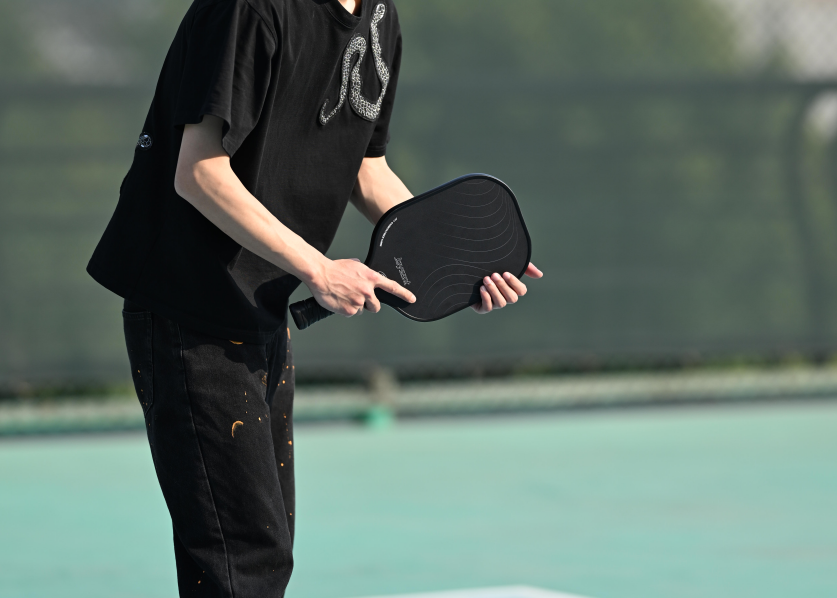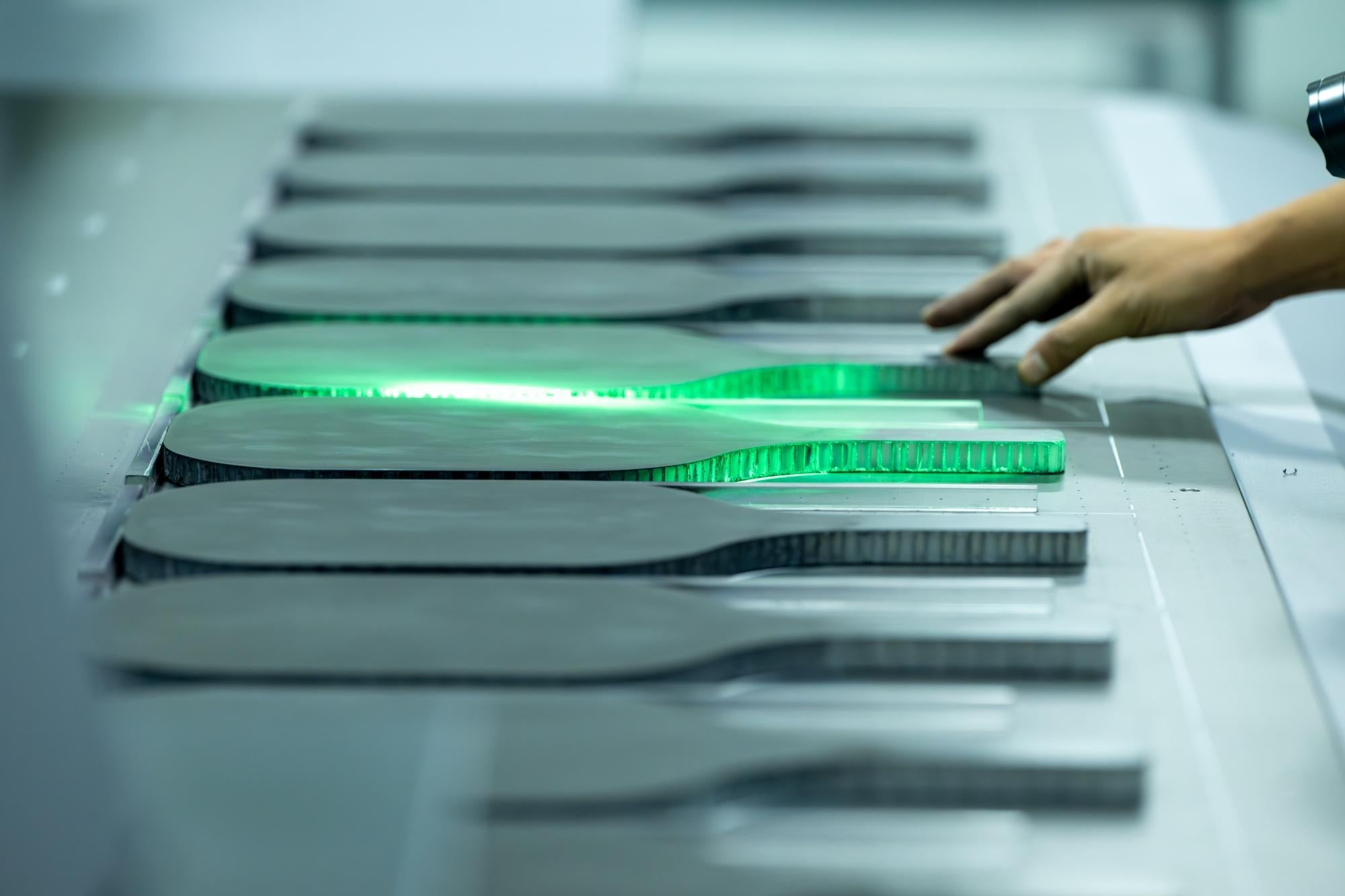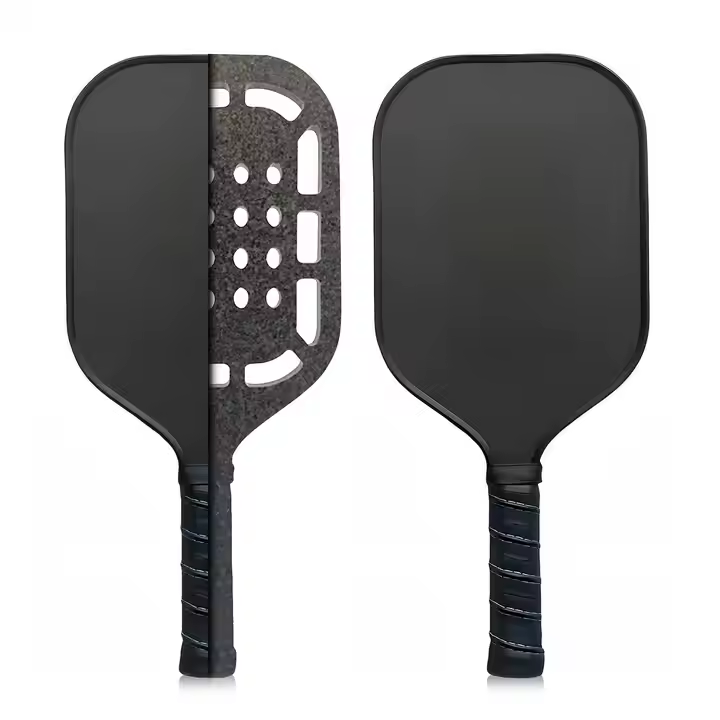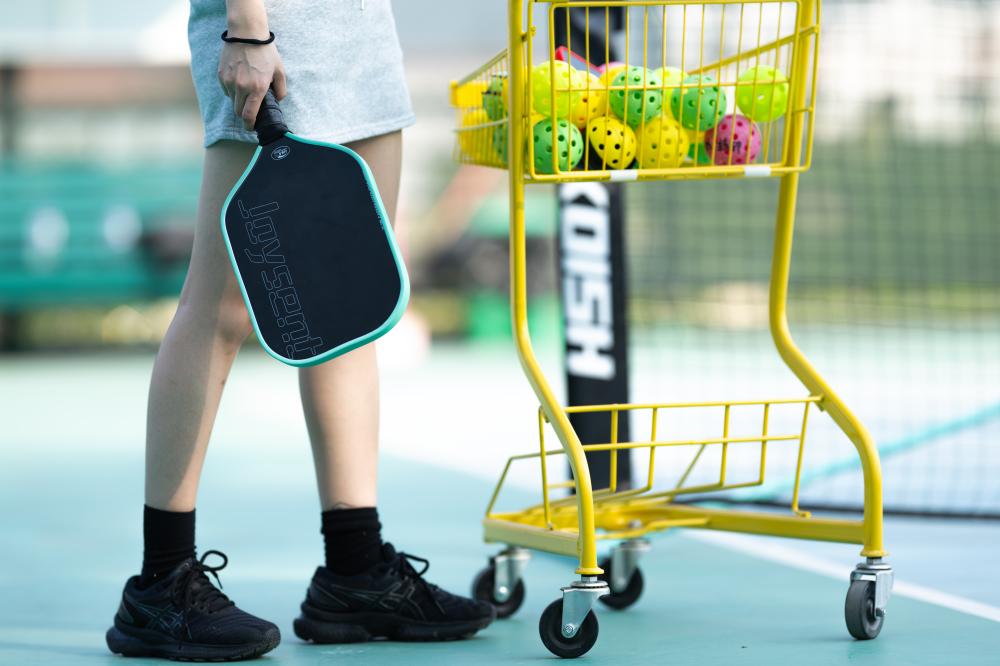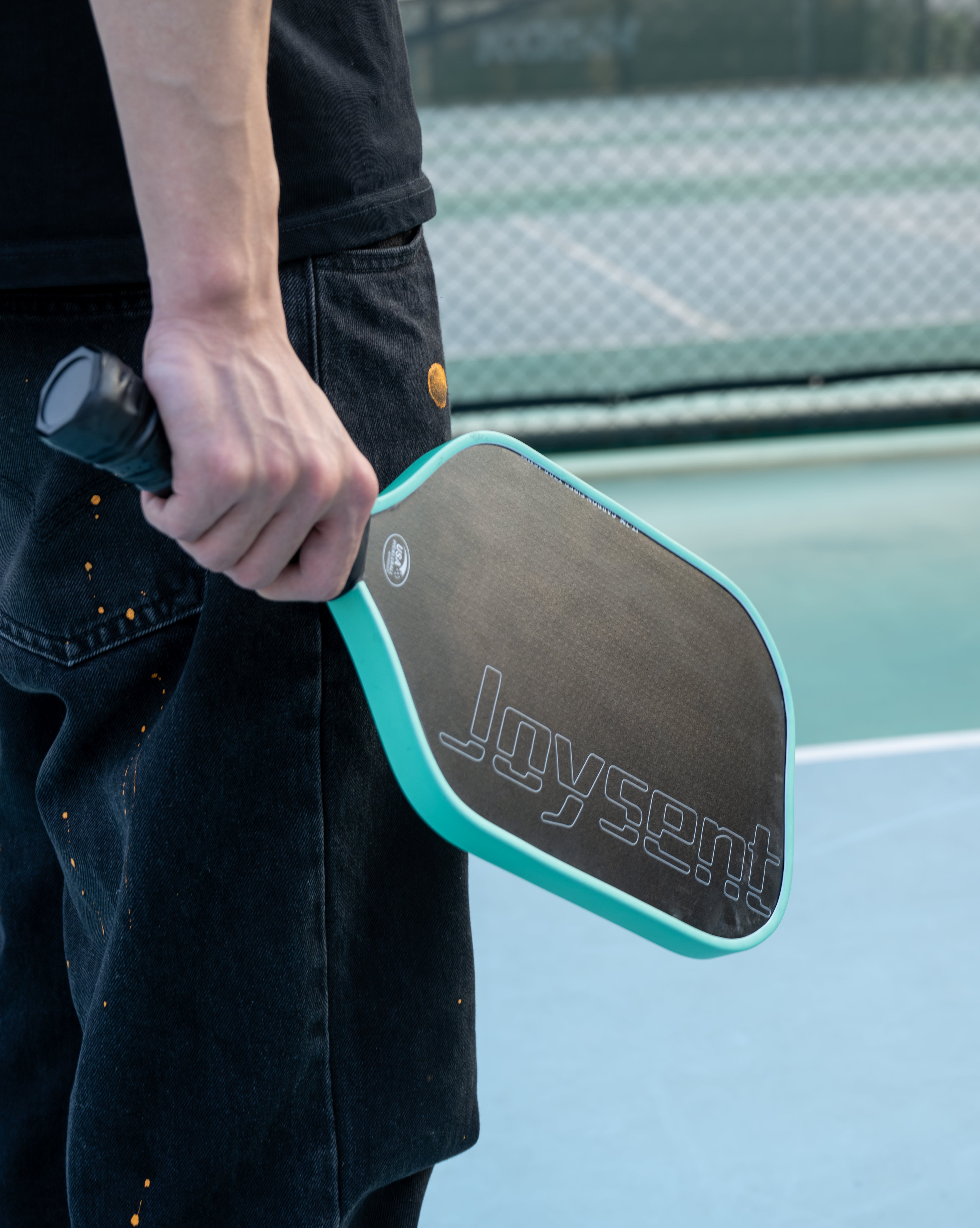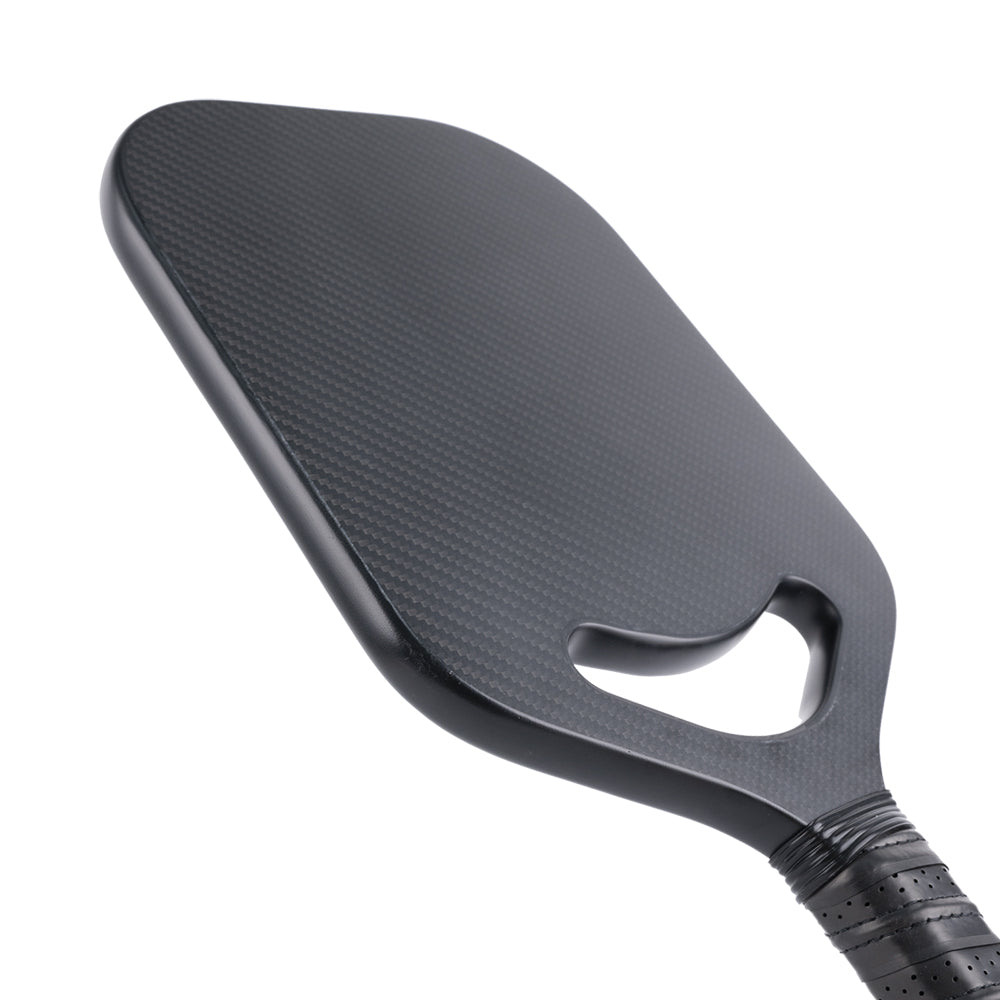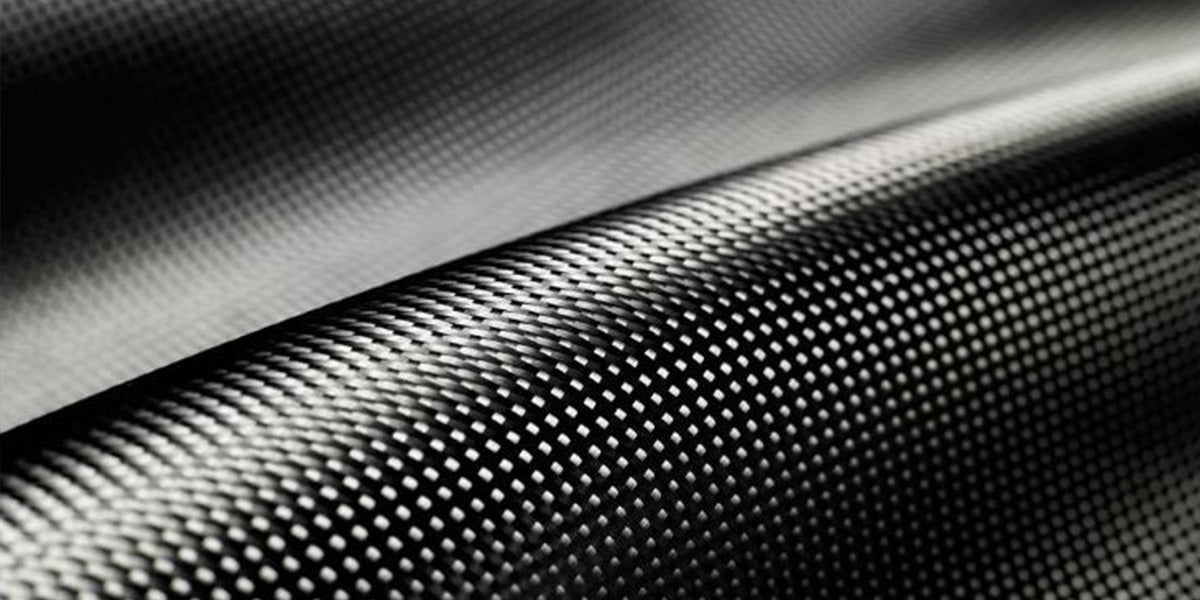
Carbon Fiber vs. Fiberglass: How Core Materials Affect Your Pickleball Paddle Feel
Every pickleball player has experienced this moment: Two paddles look identical, yet produce distinctly different feels upon impact. The secret lies beneath the surface - in the core materials that define energy transfer mechanics.
Whether you're a power-driven attacker or a control-focused strategist, understanding carbon fiber and fiberglass properties will transform how you select equipment. This article explains the material science behind paddle performance, free from marketing hype.
Material Fundamentals
Carbon Fiber Construction
Carbon fiber paddles are made by weaving ultra-thin carbon strands into a rigid lattice, then bonding them with epoxy resin. The molecular alignment creates high directional stability.
Fiberglass Composition
Fiberglass uses randomly oriented glass fibers embedded in polymer. The chaotic fiber distribution allows multi-directional flexibility.
Performance Characteristics
Energy Transfer
-
Carbon Fiber: Direct energy transmission enables faster ball exit speed (approx. 8-12% quicker than fiberglass)
-
Fiberglass: Energy absorption through fiber bending creates softer impact feel
Vibration Control
-
Carbon Fiber: Transmits high-frequency vibrations (200-500Hz) more directly to the arm
-
Fiberglass: Dampens medium-frequency vibrations (50-200Hz) through material deformation
Durability
-
Carbon Fiber: Resists permanent deformation but may develop micro-cracks under repeated impacts
-
Fiberglass: Gradually loses elasticity over time while maintaining structural integrity
Application Scenarios
When to Choose Carbon Fiber
-
Players prioritizing shot speed and directional accuracy
-
Competitive environments requiring instant power response
-
Users without chronic arm joint issues
When to Choose Fiberglass
-
Players valuing comfort and vibration reduction
-
Recreational play with extended rally durations
-
Users needing elbow/shoulder protection
Technical Evolution
Modern paddles often combine both materials:
-
Carbon-fiber surface layers for immediate power response
-
Fiberglass core structures for vibration absorption
-
Hybrid designs balance stiffness and flexibility in specific zones
Maintenance Considerations
Carbon Fiber Care
-
Clean with alcohol wipes (70% concentration) to prevent resin degradation
-
Avoid exposure to temperatures above 60°C/140°F
Fiberglass Maintenance
-
Use mild soap water for cleaning to preserve polymer elasticity
-
Store vertically to prevent gravity-induced fiber misalignment
Myth Clarification
Myth 1: "Carbon fiber is always better"
Reality: Beginner players often perform better with fiberglass paddles due to larger sweet spots.
Myth 2: "Material alone determines performance"
Reality: Surface texture, edge guard design, and core thickness equally influence paddle behavior.
Conclusion
Carbon fiber excels in power transmission and precision, while fiberglass offers superior comfort and forgiveness. Players should select based on skill level, physical condition, and playing style rather than material stereotypes.

